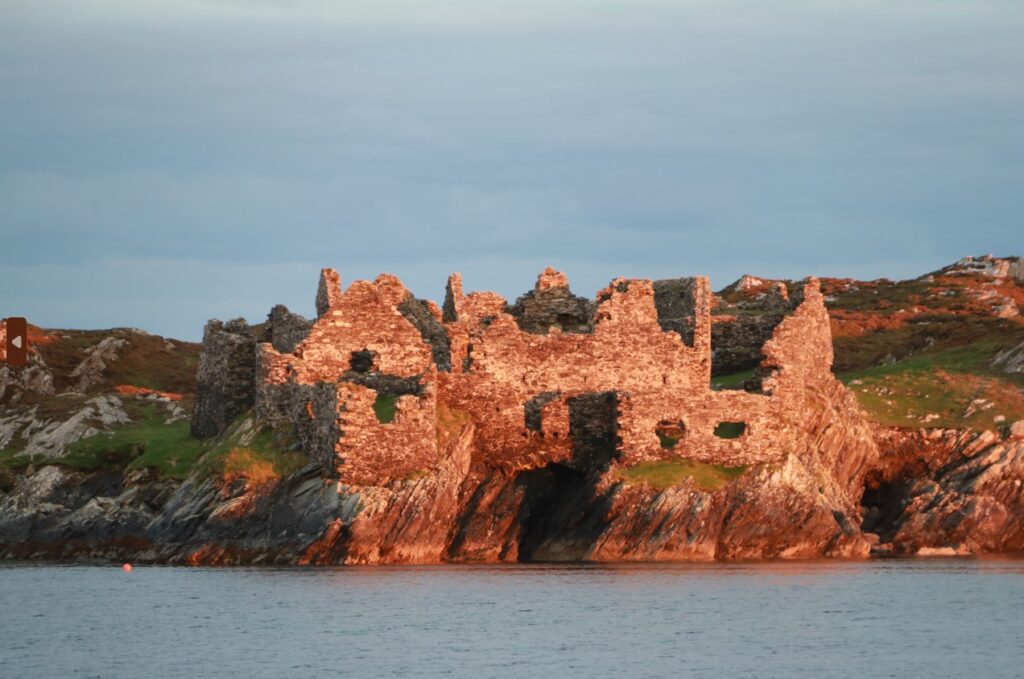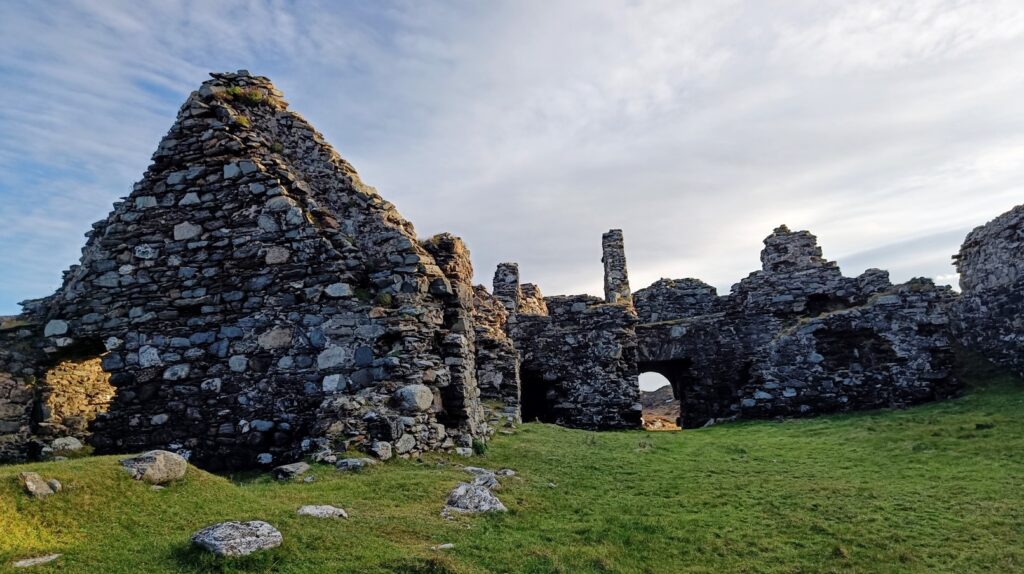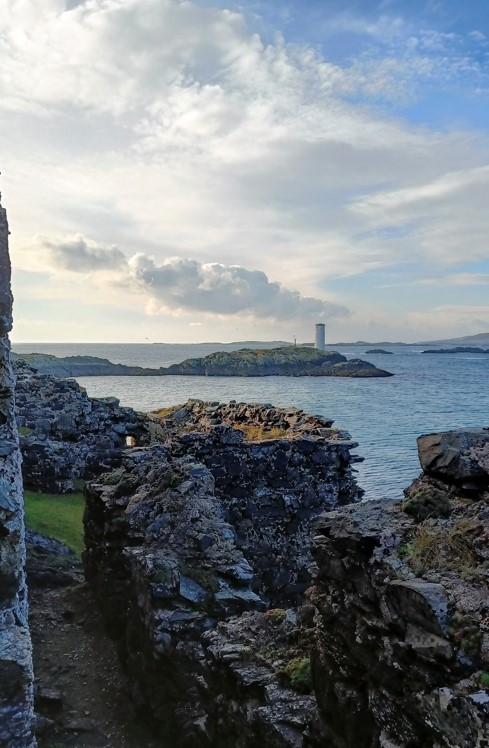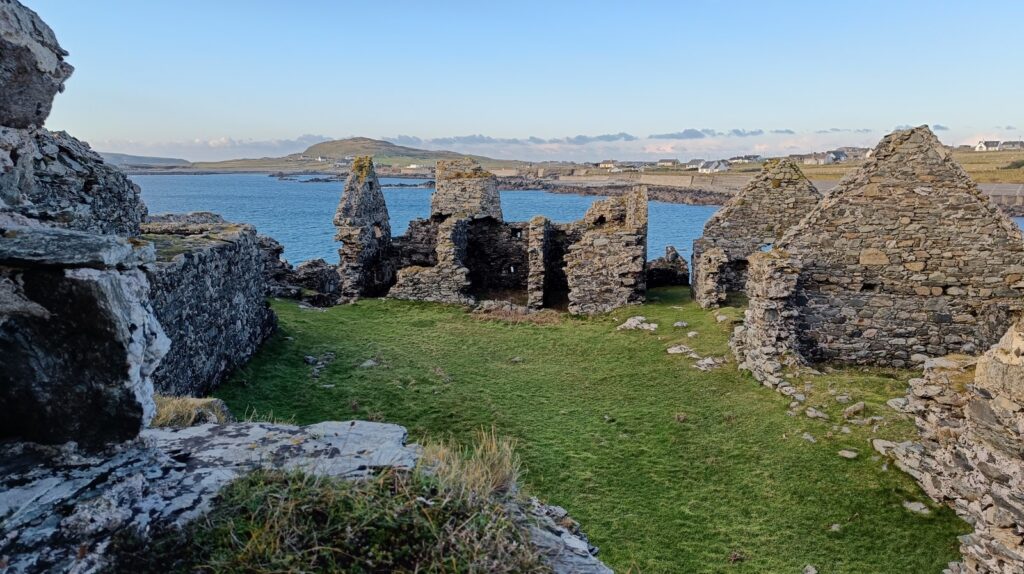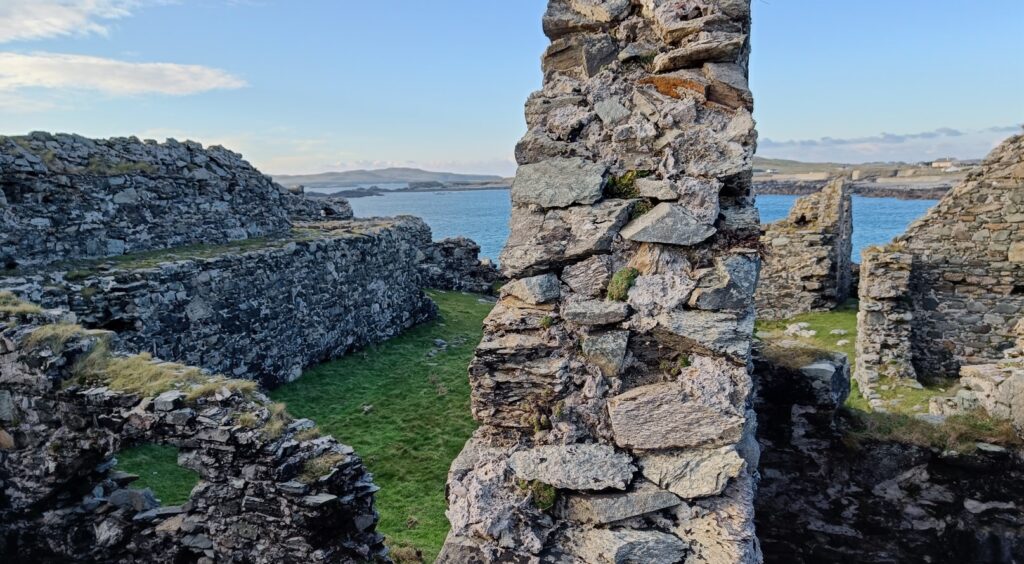Cromwell’s Barracks
Step back in time and uncover the intriguing history of Inishbofin’s iconic fort, known locally as Cromwell’s Barracks. Legend has it that the fort occupies the very ground where a Spanish pirate once erected a castle, setting the stage for centuries of historical significance. The site gained its enduring fame during a pivotal moment in Irish history—over three hundred years ago—when it became the backdrop for the last stand of Irish royalist forces against Cromwellian troops in 1652. The fort, with its distinctive 17th-century star-shaped design, not only bears witness to the struggles of the past but also serves as a testament to the resilience of Inishbofin. Join us on a journey through time as we delve deeper into the captivating saga of Cromwell’s Barracks and the indomitable spirit of Inishbofin.
The O’Malley clan in the 16th century were reputed to have had a castle on Dun Grainne. Don Bosco, a supposed ally of Grainne Uaile, was said to have had a castle opposite Dun Grainne where the ruins of Cromwell’s Barracks now stand. Together the pair kept out intruders from the harbour. They prevented unwanted intruders from entering the surrounding waters, or they used the natural harbour as a trap to attack and loot those ships with valuable cargo on board. Being raiders, they could also use the same technique to trap merchandised ships in the harbour and avail of their treasures for themselves. They succeeded by stretching a chain boom across the harbour entrance from the castle at the harbour to Scealp na gCat at the opposite end.
The strategic importance of these islands ensured that they attracted the attentions of both National and English forces during the major upheavals caused by the 1641 Rebellion. During this time Inishbofin became a pivotal stronghold in the West and was the last to fall.
Royalist forces held out here with French aid from the Duke of Lorraine and made a last ditch campaign of resistance. After some initial success, which included retaking the Aran Islands, the resistance finally crumbled and the islands surrendered in somewhat controversial circumstances. The Cromwellian regime built the imposing and wonderfully intact Star-Shaped artillery fort at the mouth of the harbour, circa 1656. It is known locally as Cromwell’s Barracks and Don Bosco’s fort.
With the Cromwellian occupation the islands entered a new and somewhat bizarre stage. The Fort was used as a penal holding for Catholic priests and many remained until the restoration of Charles 11. During the Jacobite wars the fort was again in Irish hands and held out until after the battle of Aughrim in 1691, when they surrendered on good terms to the Williamite forces.
In the years following construction the barracks was used to house captured Catholic clergy from all over the country after the English Statute of 1655 declared them guilty of high treason. Here they awaited transportation to the West Indies and other remote places.
After the restoration of Charles II to the throne in 1660 the barracks was used mainly as part of a defensive strategy. During the Jacobite War it was used when the Irish Forces held out until after the Battle of Aughrim in 1691, when they surrendered to the Williamite Forces. Their interest in these islands was simply to cast an eye over French pirates that trolled up and down the west coast and who often took refuge in such natural harbours as the one located at Inishbofin.
To the east of Cromwell’s Barracks is an impressive crescent-shaped medieval harbour. This must have played a major part in allowing ships in and out during the Cromwellian and Jacobite Wars. It is now almost totally silted up but it is still visible at spring tides. It still stands over 3m in height at low tide.
After Cromwell
In the eighteenth century, the islands then owned by the Burkes entered a period of relative tranquillity and benign neglect. The islanders resorted to the old age practice of ship wrecking and smuggling. A surviving warrant of 1741 gives a fascinating description of the wrecking of a ship, the Kitty Briggs who was bound for England with a rich cargo from Antigua in the West Indies. She was attacked in Inishbofin harbour by three O’ Flaherty brothers, one being a priest.
In the nineteenth century fishing supported an enormous population of over 1600 people which included the hunting of seals and basking sharks. The Irish language continued to be spoken on these islands up to the 1900s when it was gradually replaced by English. In recent times the growth of the tourist industry has brought fresh life into Inishbofin and this should revitalise the economic life of this most picturesque of islands.
For more information please check out our selection of books at Inishbofin Online Shop

